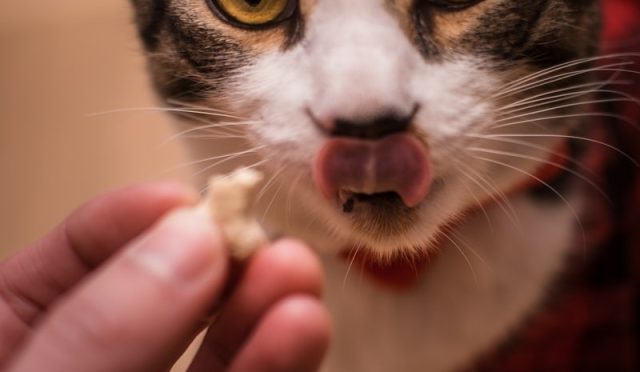First off, protein is the superstar in dog nutrition. It’s not just about filling their tummy; protein is crucial for muscle growth, energy, and overall health. Think of it as building blocks — the more quality building blocks you provide, the sturdier the structure! Look for high-quality meat sources, like chicken or beef, in your dog’s food. And don’t forget about the importance of healthy fats. Omega-3 and Omega-6 fatty acids can be likened to the oil that keeps the engine running smoothly, promoting a shiny coat and healthy skin.
Now, let’s talk about carbs. You might be wondering if dogs really need them. Well, think of carbs as the quick energy snacks. Whole grains and vegetables offer fiber which aids digestion, making those daily walks a breeze. Just remember to treat those carbs as a side dish, not the main course.
Vitamins and minerals are like the secret spices that enhance the full flavor of your dog’s diet. They help with immune function, bone health, and much more. A good dog food should have a mix of these nutrients to keep your pup feeling vibrant.
Paws and Plates: The Ultimate Guide to Dog Nutrition for Every Breed
Think of your dog’s diet like a finely-tuned recipe; it requires the right balance of proteins, fats, carbohydrates, vitamins, and minerals. Imagine trying to cook up a gourmet meal without knowing the key ingredients—chaos, right? For instance, high-energy breeds like Border Collies thrive on a protein-packed diet that fuels their endless playtime. On the flip side, smaller breeds often benefit from a higher fat content in their food, which helps keep their little engines running throughout the day.
It’s essential to avoid the one-size-fits-all mentality when it comes to feeding your furry friends. The breed, age, size, and activity level all play significant roles in what should end up in their bowl. Did you know that senior pups often require less protein but need more fiber to support digestion? Consider them like fine wine—aging gracefully requires special attention!
Also, let’s not forget about those sneaky food allergies that can wreak havoc on your pup’s health. Have you ever seen your dog scratch non-stop or experience tummy troubles after dinner? Tracking their reactions to certain foods can help you pinpoint any issues and steer clear of the culprits.
Taking the time to understand and cater to your dog’s nutritional needs is like giving them the gift of longevity and vitality. So, are you ready to roll up your sleeves and become a master chef for your fur baby? It’s a journey worth embarking on!
From Kibble to Fresh: Decoding the Best Diets for Your Furry Friend
Now, let’s dive into the juicy world of fresh food diets. Imagine swapping that frozen meal for a homemade feast—it’s a game changer! Fresh ingredients can provide vital nutrients that kibble sometimes lacks. Think of it as giving your dog the same quality of food you’d want for yourself. It doesn’t just look good on the plate; it’s packed with real benefits. Fresh food can reduce allergens, improve digestion, and even give your pup a shinier coat—think of it as a spa day for their insides.
But just like with us, not all fresh diets are created equal. Some might be heavy on grains while others focus on lean protein. Some pet parents choose to dabble in raw diets, imagining their pooch channeling their inner wolf. It’s vital to do your homework here—consulting with your vet can help strike the perfect balance.
As the debate rages on between kibble lovers and fresh food fanatics, the best diet really comes down to your dog’s specific needs. Are they hyper and energetic, or more of a couch potato? Nutrition isn’t one-size-fits-all; it’s about crafting a plate that makes your tail-wagger wag!
The Dog Diet Dilemma: What Every Pet Owner Needs to Know
Let’s face it; when it comes to our furry friends, navigating the world of dog diets can feel like trekking through a maze blindfolded. With so many options out there, how do you know what’s best for your pup? It’s a genuine dilemma that can cause even the most experienced pet owner to scratch their head in confusion.
Think of your dog’s diet as their own personal roadmap to health. Just like you wouldn’t fill your car with the wrong fuel, you shouldn’t feed your dog anything that doesn’t rev their engine. Each dog is unique, from their breed and age to their activity level, and this all plays a crucial role in determining their dietary needs. Have you ever wondered if you’re feeding your dog the right mix of nutrients? It’s like trying to figure out the perfect recipe for a successful dish; you need the right ingredients in the right amounts!
Now, let’s talk about popular dog diets—kibble, raw food, or home-cooked meals. Each option has its pros and cons, like a double-edged sword, ready to tip the scales. While kibble is convenient, it’s akin to fast food for dogs—quick but possibly lacking in essential nutrients. On the other hand, a raw diet may sound appealing because of its natural roots, but it requires careful balancing to avoid nutritional deficiencies. And then there’s home-cooked meals, which can be labor-intensive but offer the joy of knowing exactly what’s going into your pooch’s belly.
Barking Up the Right Tree: Essential Nutrients Your Dog Can’t Live Without
First up, let’s talk about protein. Think of it as the building blocks of your dog’s body—muscles, skin, and even fur rely heavily on it. Without enough protein, your pup might end up looking like a sad potato rather than the energetic companion you know and love. Fat is another essential nutrient that often gets a bad rap; however, it’s like the high-octane fuel for your dog’s energy tank. Healthy fats keep their coat shiny and help in absorbing those vital vitamins.

Now, don’t forget about carbohydrates, which are like the quick snacks that keep your dog going throughout the day. They provide energy and help with digestion. Plus, fiber-rich carbs can keep your pup regular—nobody wants doggy tummy troubles, right?
Vitamins and minerals are the small but mighty superheroes of your dog’s diet. Packed with antioxidants, they help boost the immune system and keep those pesky vet visits at bay. Vitamins A, D, and E are crucial for everything from bone development to skin health. And let’s not overlook water—yes, it’s a nutrient too! Hydration is the unsung hero that ensures everything runs smoothly.

So, as you’re mixing up your dog’s dinner, think of it like creating a gourmet meal. Each ingredient plays an important role, and when they all come together, your dog lives life barking joyfully up the right tree!
Healthy Hounds: Expert Tips on Crafting the Perfect Dog Diet
First off, let’s talk about protein. Dogs are like little muscle factories; they thrive on high-quality protein sources. Think chicken, beef, or fish as the star players in your dog’s meal. Ever notice how a good steak can take your dinner from dull to delicious? The same goes for your canine companion. Their protein intake supports muscle growth and keeps them active and energized.
Next, don’t forget those colorful veggies! Carrots, green beans, and sweet potatoes aren’t just for rabbits; they pack a nutritional punch for dogs too. These power-packed foods provide essential vitamins and minerals, acting like nature’s multivitamins. Picture this: every bite of carrot is like a little boost of energy, energizing your pup for their next play session.
Let’s move on to grains and carbohydrates. Whole grains, like brown rice and oats, offer the fuel your dog needs, similar to how pasta fuels our workouts. But be cautious with portions! Too many carbs can lead to a sluggish pup, so balance is key.
Lastly, remember those fatty acids! Omega-3s from fish oil can work wonders for your dog’s coat and skin, making them shine brighter than your favorite cozy sweater. Sneaking in a bit of this nutrient ensures your hound doesn’t just look good, but feels great too! Who wouldn’t want a dog that glows with health?
The Science of Puppy Plates: How to Feed Your Dog Right for Optimal Health
First off, let’s talk about portion control. Just like we wouldn’t serve a five-course meal on a tiny appetizer plate, your puppy should have a plate that’s sized just right. A plate that’s too big encourages overindulgence, while one that’s too small might lead to frustration. You want your puppy to feel satisfied, not like they’re competing for scraps. An appropriately sized plate sets them up for success and helps you keep an eye on their portions.
Now, consider the design. Some puppy plates come with raised edges or dividers, turning mealtime into an engaging puzzle. Think about it: a puppy plate that makes it fun to explore their food can help slow down speedy eaters and decrease the risk of choking. Plus, feeding from a plate designed for their little snouts reduces the mess—less food on the floor means more time for cuddles!
Food for Fido: A Comprehensive Look at Canine Nutrition Myths and Facts
Take chocolate, for example. We love it, but for Fido, it can be toxic. Think of it this way: if chocolate is the delicious cake at a party, dogs are the ones who get sent outside to play. But don’t worry! There’s a smorgasbord of dog-safe foods that can truly delight their taste buds and keep their tails wagging.
Now, let’s dive into the topic of grain-free diets—another hot potato among pet owners. Many believe that grains are the enemy, leading to all sorts of health issues. But here’s the truth: for most dogs, grains can be a perfectly healthy part of their diet. Just like us, every dog is unique, and some may actually thrive on a mix that includes grains. Think of it like a well-balanced diet for humans: we need variety for optimum health.
And don’t get me started on raw food diets! While some swear by them, others raise eyebrows, citing risks of bacteria and imbalances in nutrition. It’s essential to weigh the pros and cons and to consult with your vet if you’re considering a shift to a raw diet.
Feeding Fido isn’t just about filling his bowl; it’s about understanding what keeps him healthy and happy. So, next time you’re shopping for dog food or considering your pup’s meal plan, keep those myths at bay and focus on facts—because a well-fed dog is a happy dog!






